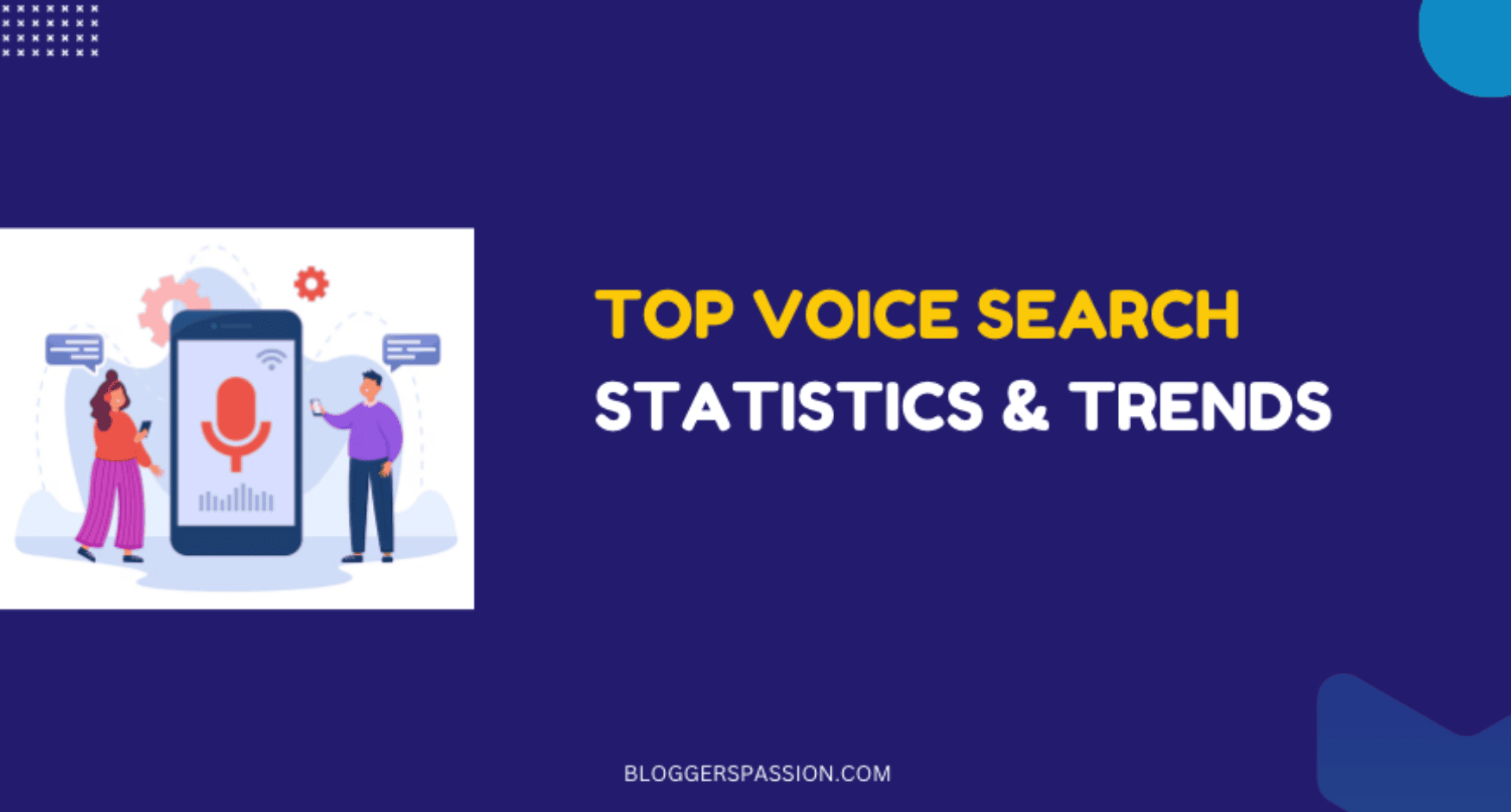Local SEO involves optimizing your website or business to target nearby customers in a particular geographic region.
It includes location-based searches such as “best veg restaurants near me”, “best plumbers in [area name]”, “wellness spa nearby”, etc.
58% of companies don’t optimize for local search.
In this post, we’ll discuss the latest local SEO stats to help you improve your overall local search strategy in 2026. Let’s get started.
Table of Contents
Key Local SEO statistics for 2026
- 8 out of 10 people look for local businesses every single week, and 3 out of 10 people do every single day.
- Google Search is the #1 used platform for local business searches, with 80% of consumers using it.
- Having a dedicated page for each service and strong internal linking are the top factors for higher local search rankings.
- People trust products with ratings of 4.0 to 4.7 stars more than those with a perfect 5.0.
- A product with five reviews is 270% more likely to be purchased than one with no reviews.
Local Search Trends in 2026
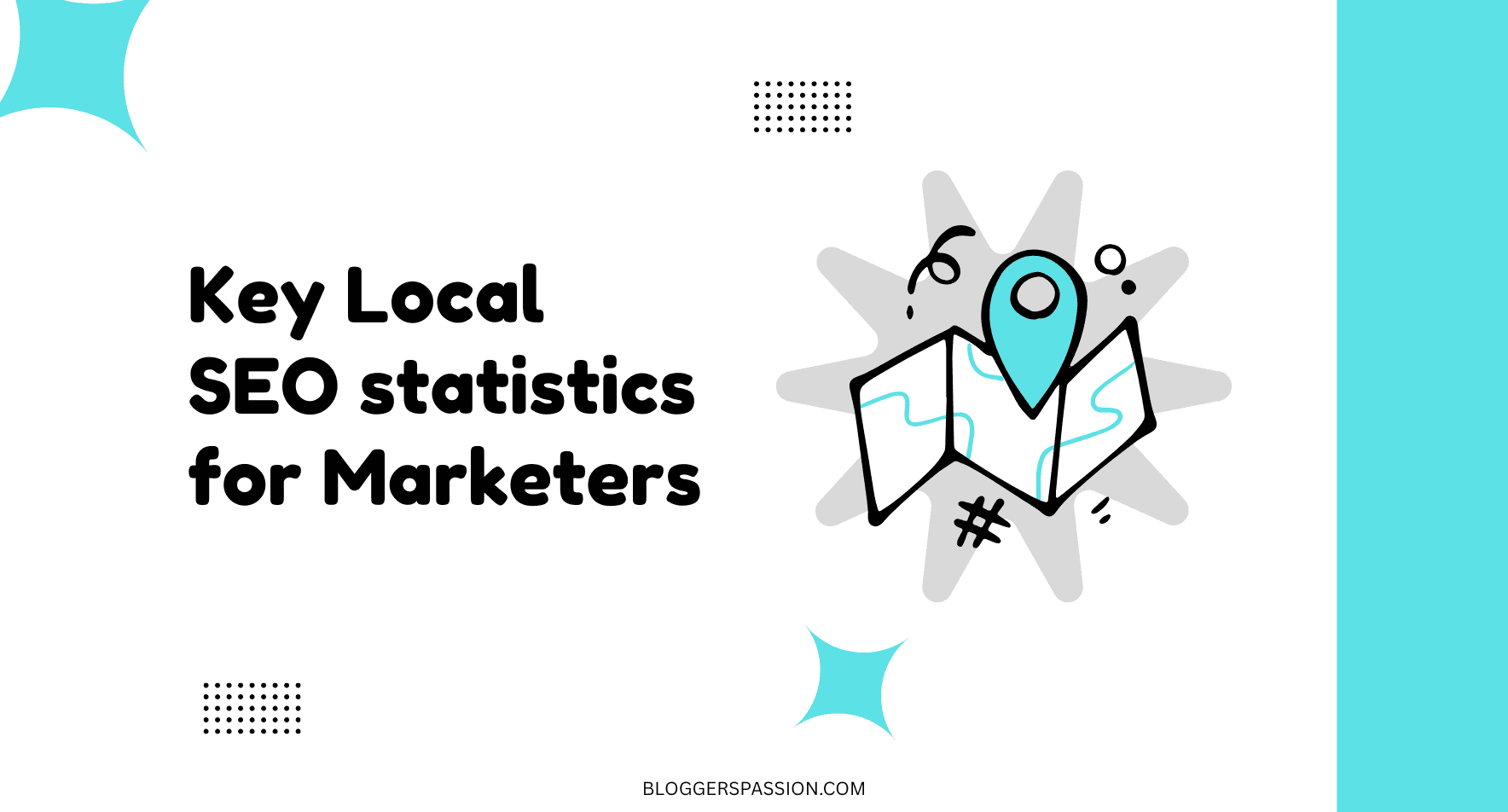
About 8 out of 10 people in the U.S. search for local businesses each week, and 3 out of 10 do it daily. “Near me” searches have grown five times in two years as more people shop locally on their phones.
How Often Consumers Search for Local Businesses
Approximately 80% of people in the U.S. search for local businesses every week, and nearly one-third (32%) do so daily.
Mobile searches for “near me” that include phrases like “can I buy” or “to buy” have increased by more than 500% in the past two years. This indicates that an increasing number of people now use their phones to locate and purchase products or services nearby.
Growth of “Near Me” and Local Intent Searches
In the U.S., there are over 5.9 million “near me” keywords that receive approximately 800 million searches each month. Approximately 80% of people search for local businesses each week, and 32% do so daily.
Want to improve your local SEO presence? Here are some of the best local SEO tips to boost your online visibility.
Consumer Behavior in Local SEO
80% of people use Google Search to find nearby local businesses, and 32% of consumers use Facebook for local searches.
Top Platforms Used for Local Business Searches
The two most popular platforms used for local business searches are Google Search and Google Maps.
4 in 5 consumers use search engines to find local information.
The four major social media platforms consumers use to find local businesses are Facebook, Instagram, TikTok, and Snapchat.
Here’s a breakdown of the top platforms used by consumers to find local businesses.
| Platform | Share of Consumers |
| Google Search | 80% |
| Google Maps | 49% |
| 32% | |
| 19% | |
| TikTok | 15% |
| Apple Maps | 13% |
| Yelp | 12% |
| Bing | 11% |
| 11% | |
| ChatGPT | 11% |
| Snapchat | 8% |
| DuckDuckGo | 7% |
| Gemini | 6% |
| TripAdvisor | 6% |
Sources: Soci Consumer Behavior Index, Think With Google
How Consumers Act After Searching for Local Businesses
When searching locally, most customers look for trust signals. The top 3 factors that influence their choice are: photos, Google reviews, and position on the search engine results page (SERP).
Here’s the breakdown of the number of factors influencing consumers’ decisions about a business.
| Influencing Factors | Share of Consumers |
| Photos | 24% |
| Google Reviews | 21% |
| Position on the search engine results page | 21% |

Source: Review Trackers
Mobile vs Desktop Behavior in Local Searches
88% of searches for local information are on smartphones, whereas 84% are on computers/tablets.
On smartphones, 54% of users search for business hours, 53% look for directions to a local store, and 50% search for the store’s address.
On smartphones, 50% of consumers visit a store within a day of their local search. 18% of local mobile searches result in a purchase within a day.
On desktops or tablets, 34% of customers visit a store within a day of their local search.
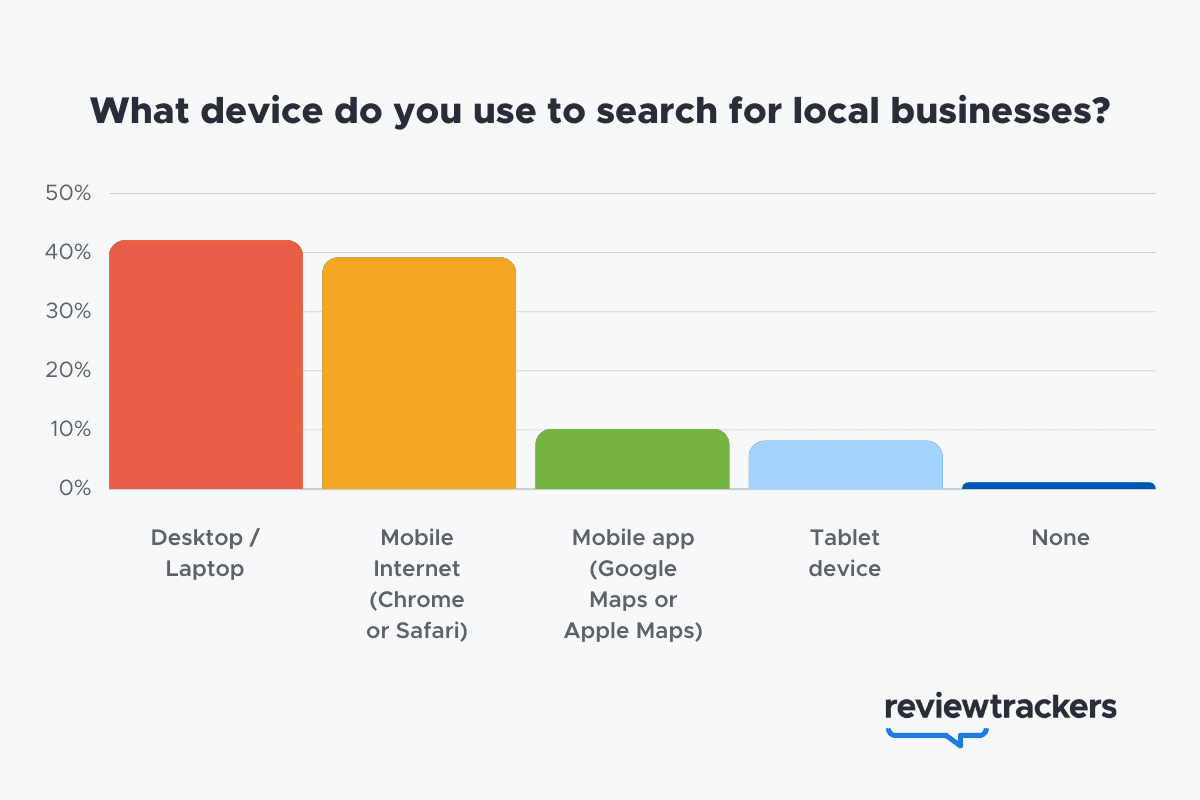
Only 11% of local searches are done from map-based apps.
Here’s a table showing how consumers search for local information across various sources.
| Location | Smartphone (%) | Computer/Tablet (%) |
| Home | 53% | 76% |
| On the go | 51% | 16% |
| In-Store | 41% | 15% |
| Workplace | 33% | 24% |
| Restaurant/Bar | 33% | 12% |
Impact of Online Reviews on Local SEO
Approximately 9 out of 10 reviews originate from Google, Yelp, Facebook, and TripAdvisor. Most people read reviews on Google, while some also check Instagram or TikTok.
Best Platforms for Local Business Reviews
Google, Yelp, Facebook, and Tripadvisor make up 88% of all online reviews.
Here’s the table showing the popular platforms for local business reviews.
| Review Platform | Percentage of Total Online Reviews |
| 73% | |
| Yelp | 6% |
| 3% | |
| Tripadvisor | 3% |
83% of people use Google to read local business reviews. In the U.S., 31% check Instagram and 20% use TikTok to find local business reviews as alternatives.
Users on Yelp wrote 22 million reviews on the platform. Yelp users post an average of 57,534 reviews each day.
Which platforms are people using to find business reviews?
According to the BrightLocal survey, 14% of consumers use Apple Maps to find business reviews.
Here’s a table showing which sites consumers use to find business reviews from 2022 to 2025.
| Platform | 2022 | 2023 | 2024 | 2025 |
| Apple Maps | 13% | 15% | 16% | 14% |
| Trustpilot | 7% | 7% | 10% | 11% |
| Angi | NA | 9% | 7% | 8% |
| Healthgrades | 12% | 10% | 9% | 7% |
| Yellowpages | NA | 9% | 6% | 6% |
Sources: Review Trackers, BrightLocal Consumer Survey, Yelp
How Review Ratings Influence Consumer Decisions
Most consumers prefer local businesses with a minimum of 4-star ratings. About 38% expect 4 stars, 21% are okay with 3.5 stars, and 13% accept 3 stars. Only 9% say ratings don’t affect their decision.
Here’s a table showing the minimum average star rating consumers expect before choosing a business.
| Star Rating | 2023 | 2024 | 2025 |
| 1 star | 1% | 2% | <1% |
| 1.5 stars | 1% | NA | 1% |
| 2 stars | 2% | 2% | 2% |
| 2.5 stars | 3% | 4% | 3% |
| 3 stars | 12% | 13% | 13% |
| 3.5 stars | 17% | 17% | 21% |
| 4 stars | 38% | 37% | 38% |
| 4.5 stars | 11% | 12% | 12% |
| 5 stars | 5% | 5% | 5% |
| Rating does not impact the decision | 6% | 5% | 9% |
Approximately 71% of consumers avoid local businesses with an average rating of three stars or lower. This illustrates the importance of maintaining good reviews for a local business to establish trust and attract customers.
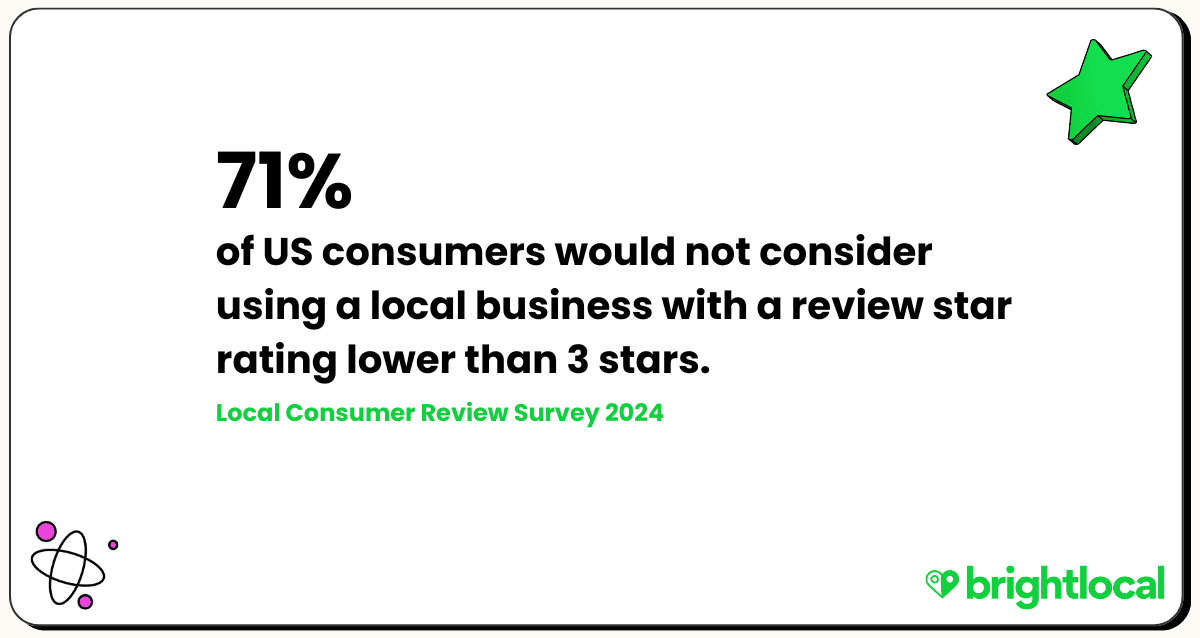
87% of consumers trust real customer reviews more than influencer or celebrity reviews, which impact only 50% of buyers.
A product with five reviews is 2.7 times more likely to be purchased than one with no reviews, indicating that even a few reviews can significantly boost purchase chances.
Sources: Soci, BrightLocal, Emplifi, Spiegel
28% of local searches become purchases. Here are 10 essential local SEO tools you can use to grow your sales and conversions.
Why Responding to Reviews Matters for Businesses
Consumers are 33% more likely to improve their review if a business replies with a personal message within a day.
88% of consumers prefer businesses that reply to all reviews, good or bad, while only 47% would consider those that don’t respond at all.
Businesses that reply to reviews receive 12% more reviews and see their average rating rise by 0.12 stars.
Consumers are willing to pay more in the future if their complaints receive a quick response.
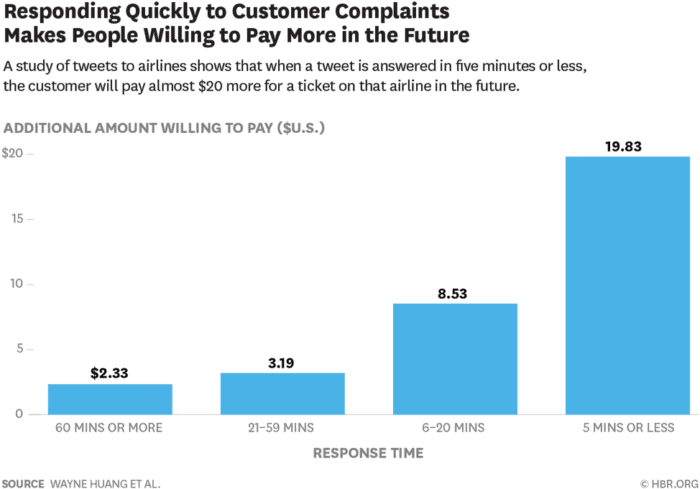
Sources: Reputation, BrightLocal, SmartInsights
Local Search Ranking Factors
Local businesses that rank in the top 3 search results have an average of 561 Google reviews with a 4.8-star rating.
High Google ratings and positive reviews drive local conversions, while most consumers find local businesses through Google Search and Maps.
Local Organic Ranking Factors
A dedicated page for each service is the #1 ranking factor. Next, internal linking across your site is essential. Both clear service pages and strong internal links boost local search rankings.
Here’s a table showing all the ranking factors ranked by experts based on their impact on local organic search results.
| Rank | Factors Affecting Local SEO Rankings | Score |
| 1 | Dedicated page for each service | 163 |
| 2 | Internal linking across the whole website | 149 |
| 3 | Quality or authority of inbound links to the domain | 148 |
| 4 | City or neighborhood keyword relevance of website content | 146 |
| 5 | Keywords in Google Business Profile (GBP) landing page title | 140 |
| 6 | Number of inbound links from locally relevant websites | 137 |
| 7 | Product or service keyword relevance across the website | 135 |
| 8 | Amount of high-quality content on service pages | 134 |
| 9 | The amount of high-quality content on the whole website | 132 |
| 10 | Keywords in the anchor text of inbound links | 128 |
Nearly 82% of patients use search engines to find a doctor online. If you’re a doctor, here’s an essential guide to SEO for doctors.
Local Pack/Finder Ranking Factors
The #1 ranking factor in the local pack is having the right main category on your Google Business Profile. Using keywords in your business name is the next key step to help improve your local pack ranking.
Here’s a table showing all the ranking factors, ranked by their impact on local pack or finder rankings.
| Rank | Factors Affecting Local Pack Rankings | Score |
| 1 | Main category on Google Business Profile | 193 |
| 2 | Keywords in Business title | 181 |
| 3 | How close the address is to the Searcher | 176 |
| 4 | Having a physical address in Search City | 170 |
| 5 | Removing Fake Spam listings | 143 |
| 6 | High Google Ratings (4 to 5 stars) | 138 |
| 7 | Extra Categories on Google Business Profile | 134 |
| 8 | Number of Google Reviews (with text) | 128 |
| 9 | Verified Google Business Profile | 117 |
| 10 | Address close to Area Center | 114 |
Local Conversion Factors
High Google ratings (4-5 stars) are the top factor for local SEO conversions. Positive, happy reviews in the text come next as an important conversion signal.
Here’s a table showing all the ranking factors ranked by experts based on their impact on conversions.
| Rank | Factors Affecting Conversions | Score |
| 1 | Lots of high star ratings | 177 |
| 2 | Positive sentiment in review text | 151 |
| 3 | Mobile-friendly website | 149 |
| 4 | Many written Google reviews | 145 |
| 5 | A page for every service you offer | 137 |
| 6 | All business info is filled in | 133 |
| 7 | The booking option is turned on | 132 |
| 8 | Hours listed are correct | 131 |
| 9 | Clear and helpful photos | 128 |
| 10 | The owner often replies to reviews | 128 |
Source: Whitespark, Semrush
Mobile SEO and Local Search Engagement
64.35% of all website traffic comes from mobile devices. Mobile traffic was only 6.1% back in 2011, indicating mobile Internet usage has increased more than tenfold in the last decade.
Nearly 96.3% of people use a mobile phone to go online.
Here’s a table showing the distribution of internet traffic by device.
| Device | Share of Users |
| Mobile Phone (Any) | 96.3% |
| Laptop or Desktop (Any) | 61.5% |
| Connected Television | 31.7% |
| Tablet | 27.9% |
| Smart Home Device | 17.9% |
| Games Console | 11.5% |
| Feature Phone | 4.5% |
| Virtual Reality Device | 4.3% |
Google currently accounts for 94.64% of mobile searches worldwide.

Sources: Exploding Topics, StatCounter
Only 43.4% of mobile sites pass Core Web Vitals, compared to 51.4% on desktop.
On mobile, only 54.9% of websites provide a good LCP (Largest Contentful Paint) experience at least 75% of the time. LCP shows how quickly users can see the main part of a page.
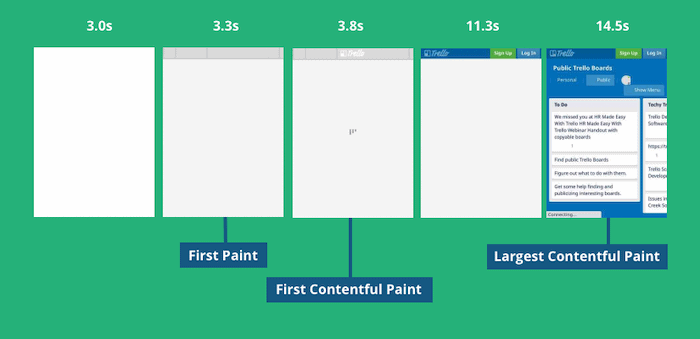
The takeaway here is that most websites still underperform in speed and usability.
Source: DebugGear
42% of people who search for local terms click a result from the Google Map Pack. It means that optimizing your local business for Google Maps is essential for more visibility.
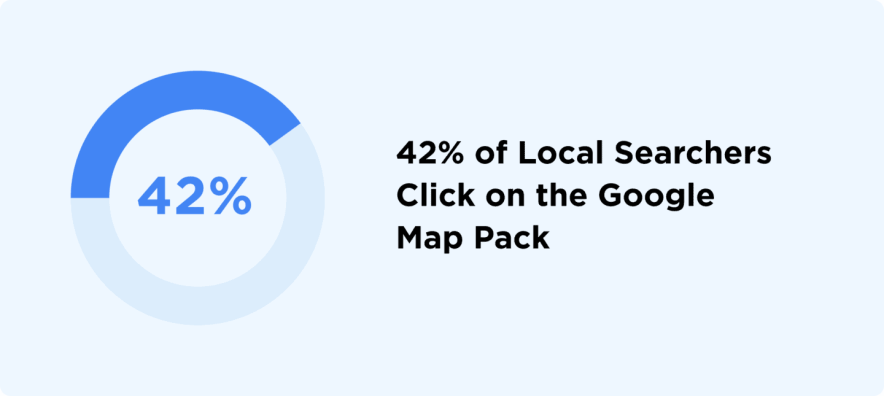
Source: Backlinko
About 76% of U.S. adults shop online using a smartphone, making it the most common device used for online purchases. Younger adults are far more likely to use their smartphones for online shopping; 87% of those aged 18–29 do so.
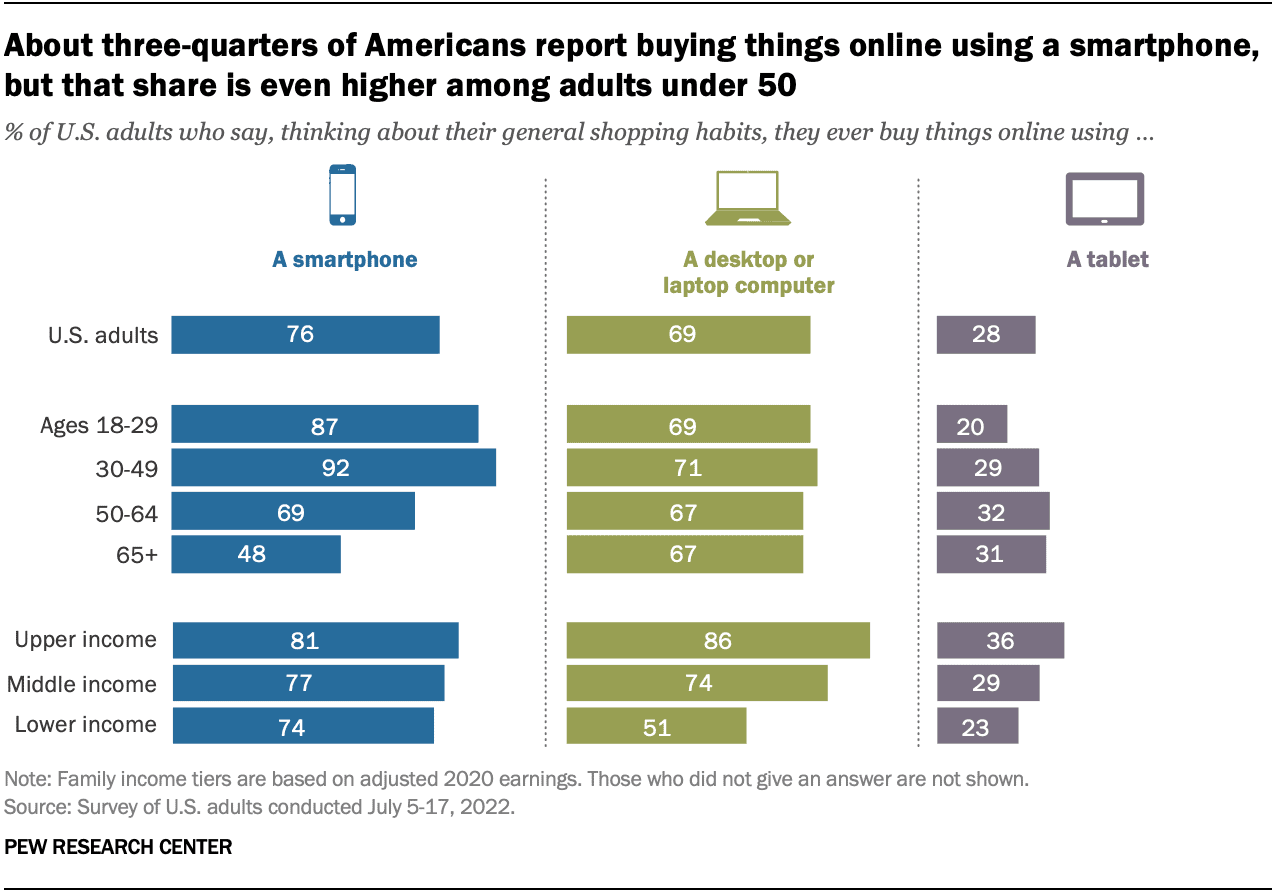
Source: Pew Research
Conclusion
Online reviews play a significant role in boosting your local business’s conversions, store visits, and overall sales.
Most people trust honest customer feedback, which is often found on Google, Yelp, Facebook, and TripAdvisor.
Maintaining a 4-star rating or higher and responding to reviews promptly can significantly enhance local SEO.
What are your thoughts on the Google Local Search Statistics listed above? Did you find them helpful? Let us know your thoughts in the comments.
FAQs About Local SEO Statistics
Here are some of the frequently asked questions about local SEO.
About 46% of all Google searches have local intent.
Google Business Profile, Apple Maps, Yelp, and Facebook are top platforms for local searches.
Online reviews are extremely important as 87% of people read them before making a decision.
About 8 out of 10 people search for local businesses weekly.
Google, Yelp, Facebook, and Tripadvisor have the most online business reviews.
41% of consumers are okay with businesses using AI if it improves their experience.

